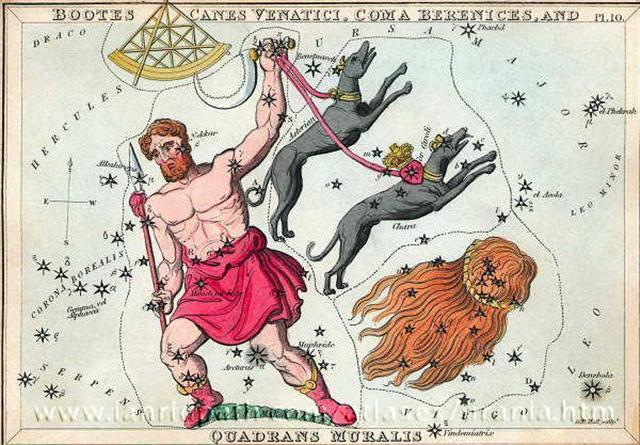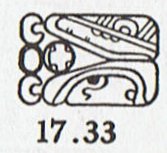102. Before the last part of the Square once again returned to visibility late at night it could be explained that Mother Earth, as represented by her new generation, 'her child' - the Princess - was dormant
Or that she was not feeling very well, she was sick and in need of fresh water ('needwater'):
A translation of the hieroglyphic text incised on the ancient ebony black Egyptian Den Tablet is expressing such an idea. ... there was a beautiful royal princess in the island of Bohol named Bugbung Humasanun, so secluded (binokotan) in her chamber where she could only be found spinning, weaving or embroidering. She was adored for her coiffured panta or talabhok, a great mass of hair accented with artificial switches which is of great offense for a man to even touch. Her appearance to the public was like the first ray of the sun that gives joy and delight, or like a sudden flash of lightning that causes fear and respect ... A great, brave and just chief named Datung Sumanga married her after several pangngagad and going through ordeals to prove his love to the princess. He ruled his subjects, settled their disputes, protect them from the enemies, and lead them in battle. There was peace in Bohol during his rule. From this couple and the barangays and communities they led, grew the population of the Boholanos ...'
... It inaugurates the most accurate solar calendar known to the ancient world, with 365¼ days per year. It declares the deceased princess Berenike a goddess and creates a cult for her, with women, men, ceremonies, and special 'bread-cakes'. Lastly it orders the decree to be incised in stone or bronze in both hieroglyphs and Greek, and to be publicly displayed in the temples. The traditional Egyptian calendar had 365 days: twelve months of thirty days each and an additional five epagomenal days. According to the reform, the 5-day 'Opening of the Year' ceremonies would include an additional 6th day every fourth year. The reason given was that the rise of Sothis advances to another day in every 4 years, so that attaching the beginning of the year to the heliacal rising of the star Sirius would keep the calendar synchronized with the seasons. This Ptolemaic calendar reform failed, but was finally officially implemented in Egypt by Augustus in 26/25 BCE, now called the Alexandrian calendar, with a sixth epagomenal day occurring for the first time on 29 August 22 BCE. Julius Caesar had earlier implemented a 365¼ day year in Rome in 45 BCE as part of the Julian calendar ...
... 'For three years, far from his aged parents, he lived his life in the Spirit capital, when he began to yearn for his home and for them.' Observing the change in him, his wife asks: 'Do you desire to return home?' He replies: 'To come to this far Spirit Land, I parted from my near and kin. My yearning I cannot help ... I wish to return to my native place to see my parents for a while'. Then we read: Hand in hand they walked conversing ... till they came to where their ways diverged and where her parents and relatives, sorrowing to part with him, made their farewells. The princess informed him that she was indeed the turtle which he had taken in his boat, and she took a jewel-casket and gave it to him saying: 'If you do not forget me and desire to seek me, keep this casket carefully, but do not open it.' Thus he parted from her and entered his boat, shutting his eyes as she bade him. In a trice Urashima finds himself back in his home village again but a terrible surprise awaits him. During the three years that he has spent enchanted on the Spirit island 300 mortal years have passed and everything has changed beyond recognition. Stumbling around dazed and disconsolate, discovering from a passer-by that his own disappearance three centuries previously is itself now the subject of a village legend, he forgets the warning about the jewel box and opens it to remind himself of his Kami wife: 'But before he could look into it, something in the form of a blue-orchid soared up to the blue sky with the wind and clouds. Then he knew that, having broken his oath, he could not go back and see her again ...
... Several Asian cultures, including that of the Andaman Islands, believe that humanity emerged from a bamboo stem. In the Philippine creation myth, legend tells that the first man and the first woman were split open from a bamboo stem that emerged on an island created after the battle of the elemental forces (Sky and Ocean). In Malaysian legends a similar story includes a man who dreams of a beautiful woman while sleeping under a bamboo plant; he wakes up and breaks the bamboo stem, discovering the woman inside. The Japanese folktale 'Tale of the Bamboo Cutter' (Taketori Monogatari) tells of a princess from the Moon emerging from a shining bamboo section. Hawaiian bamboo ('ohe) is a kinolau or body form of the Polynesian creator god Kane. An ancient Vietnamese legend tells of a poor, young farmer who fell in love with his landlord's beautiful daughter. The farmer asked the landlord for his daughter's hand in marriage, but the proud landlord would not allow her to be bound in marriage to a poor farmer. The landlord decided to foil the marriage with an impossible deal; the farmer must bring him a 'bamboo tree of one-hundred sections'. The benevolent god Bụt appeared to the farmer and told him that such a tree could be made from one-hundred sections from several different trees. Bụt gave the him four magic words to attach the many sections of bamboo: 'Khắc nhập, khắc xuất', which means 'put in immediately, take out immediately'. The triumphant farmer returned to the landlord and demanded his daughter. The story ends with the happy marriage of the farmer and the landlord's daughter ...
... Gronw Pebyr, who figures as the lord of Penllyn - 'Lord of the Lake' - which was also the title of Tegid Voel, Cerridwen's husband, is really Llew's twin and tanist ... Gronw reigns during the second half of the year, after Llew's sacrificial murder; and the weary stag whom he kills and flays outside Llew's castle stands for Llew himself (a 'stag of seven fights'). This constant shift in symbolic values makes the allegory difficult for the prose-minded reader to follow, but to the poet who remembers the fate of the pastoral Hercules the sense is clear: after despatching Llew with the dart hurled at him from Bryn Kyvergyr, Gronw flays him, cuts him to pieces and distributes the pieces among his merry-men. The clue is given in the phrase 'baiting his dogs'. Math had similarly made a stag of his rival Gilvaethwy, earlier in the story. It seems likely that Llew's mediaeval successor, Red Robin Hood, was also once worshipped as a stag. His presence at the Abbot's Bromley Horn Dance would be difficult to account for otherwise, and stag's horn moss is sometimes called Robin Hood's Hatband. In May, the stag puts on his red summer coat. Llew visits the Castle of Arianrhod in a coracle of weed and sedge. The coracle is the same old harvest basket in which nearly every antique Sun-god makes his New Year voyage; and the virgin princess, his mother, is always waiting to greet him on the bank ...
... What happens after (or happened, or will happen sometime, for this myth is written in the future tense), is told in the Völuspa, but it is also amplified in Snorri's Gylfaginning (53), a tale of a strange encounter of King Gylfi with the Aesir themselves, disguised as men, who do not reveal their identity but are willing to answer questions: 'What happens when the whole world has burned up, the gods are dead, and all of mankind is gone? You have said earlier, that each human being would go on living in this or that world.' So it is, goes the answer, there are several worlds for the good and the bad. Then Gylfi asks: 'Shall any gods be alive, and shall there be something of earth and heaven?' And the answer is: 'The earth rises up from the sea again, and is green and beautiful and things grow without sowing. Vidar and Vali are alive, for neither the sea nor the flames of Surt have hurt them and they dwell on the Eddyfield, where once stood Asgard. There come also the sons of Thor, Modi and Magni, and bring along his hammer. There come also Balder and Hoder from the other world. All sit down and converse together. They rehearse their runes and talk of events of old days. Then they find in the grass the golden tablets that the Aesir once played with. Two children of men will also be found safe from the great flames of Surt. Their names, Lif and Lifthrasir, and they feed on the morning dew and from this human pair will come a great population which will fill the earth. And strange to say, the sun, before being devoured by Fenrir, will have borne a daughter, no less beautiful and going the same ways as her mother.' Then, all at once, concludes Snorri's tale wryly, a thunderous cracking was heard from all sides, and when the King looked again, he found himself on the open plain and the great hall had vanished ...
... Ebony label EA 32650 from Den's tomb. The upper right register depicts king Den twice: at the left he is sitting in his Hebsed pavilion, at the right he is running a symbolic race around D-shaped markings. This ceremony is connected to the so-called 'race of the Apis bull'. The middle right section reports about the raid of the city 'beautiful door' and about a daughter of Den suffering from an unknown disease. The lower right section reports about the visitation of the 'souls of Peh' at the royal domain 'Wenet'. The left part of the label describes the content of the vessel that once belonged to the label and mentions the high official Hemaka, who was obviously responsible for the delivery of the labeled jar ...
Technically it had to be the Virgo constellation (the Summer Maid) who was Mother Earth, rather than the other, the fishy type of wife for the Sun (the Southern Fish ↔ the Winter Maid): ... Hamiora Pio once spoke as follows to the writer: 'Friend! Let me tell of the offspring of Tangaroa-akiukiu, whose two daughters were Hine-raumati (the Summer Maid - personified form of summer) and Hine-takurua (the Winter Maid - personification of winter), both of whom where taken to wife by the sun ... Now, these women had different homes. Hine-takurua lived with her elder Tangaroa (a sea being - origin and personified form of fish). Her labours were connected with Tangaroa - that is, with fish. Hine-raumati dwelt on land, where she cultivated food products, and attended to the taking of game and forest products, all such things connected with Tane ... Because like Orion (the Winter Hunter) she was in the middle (ki roto ki) of the sky, just as the midsection at right on the ebony label above describes the raid of the Beautiful Door and a daughter of the King suffering from a special kind of disease. ... This is an ebony label from king Den's tomb in Abydos. He ruled for 42 years (around 3000 B.C.) and was the Pharaoh who introduced the method of numbering by hieroglyphs. His name Hor-Den possibly means 'he who brings the water'. The dark circle above the king inside the sanctuary of the wolf-god Upwaut (the Opener of the Way) evidently is a hole. The Egyptian Naos is the inner sanctuary ...
For when Virgo was visible high up in the night sky it meant she was 'dead' and that the Sun therefore had to be at his other wife in the east: ... An iconographic study by Jeff Kowalski suggests a cosmological layout for the Nunnery. The higher placement of the North Building, with its 13 exterior doorways (reflecting the 13 layers of heaven), and the celestial serpents surmounting the huts identify it with the celestial sphere. The iconography of the West Building, with 7 exterior doorways (7 is the mystic number of the earth's surface), and figures of Pawahtun - the earth god as a turtle - indicate this to be the Middleworld, the place of the sun's descent into the Underworld.
The East Building has mosaic elements reflecting the old war cult of Teotihuacan, where tradition had it that the sun was born; thus, this may also be Middleworld, the place of the rising sun. Finally, the South Building has 9 exterior doorways (the Underworld or Xibalba had 9 layers), and has the lowest placement in the compex; it thus seems to be associated with death and the nether regions ...
|








.jpg)


